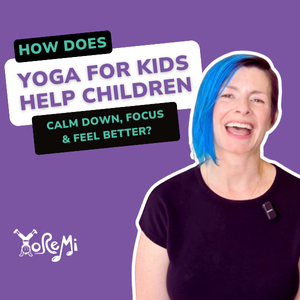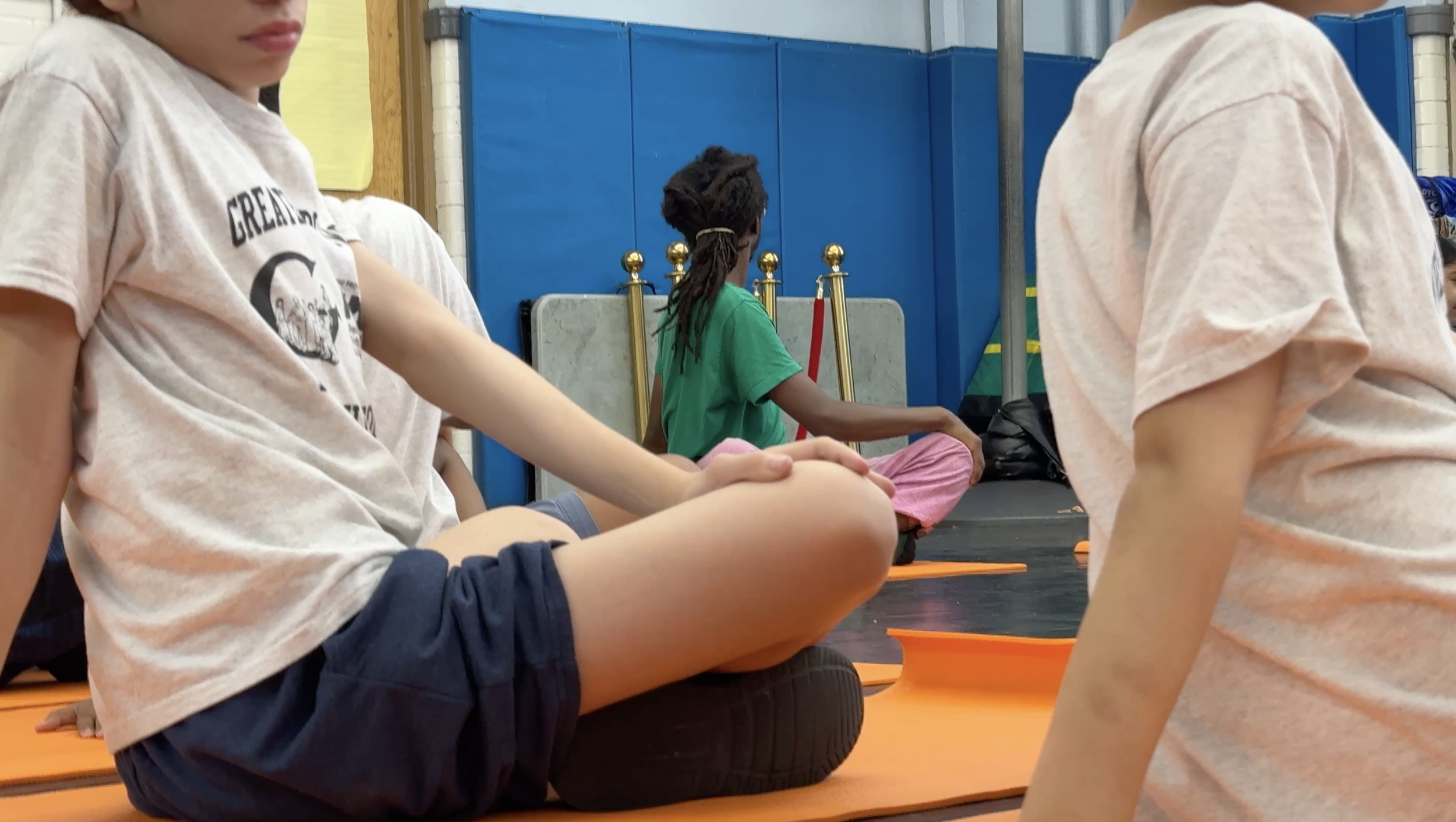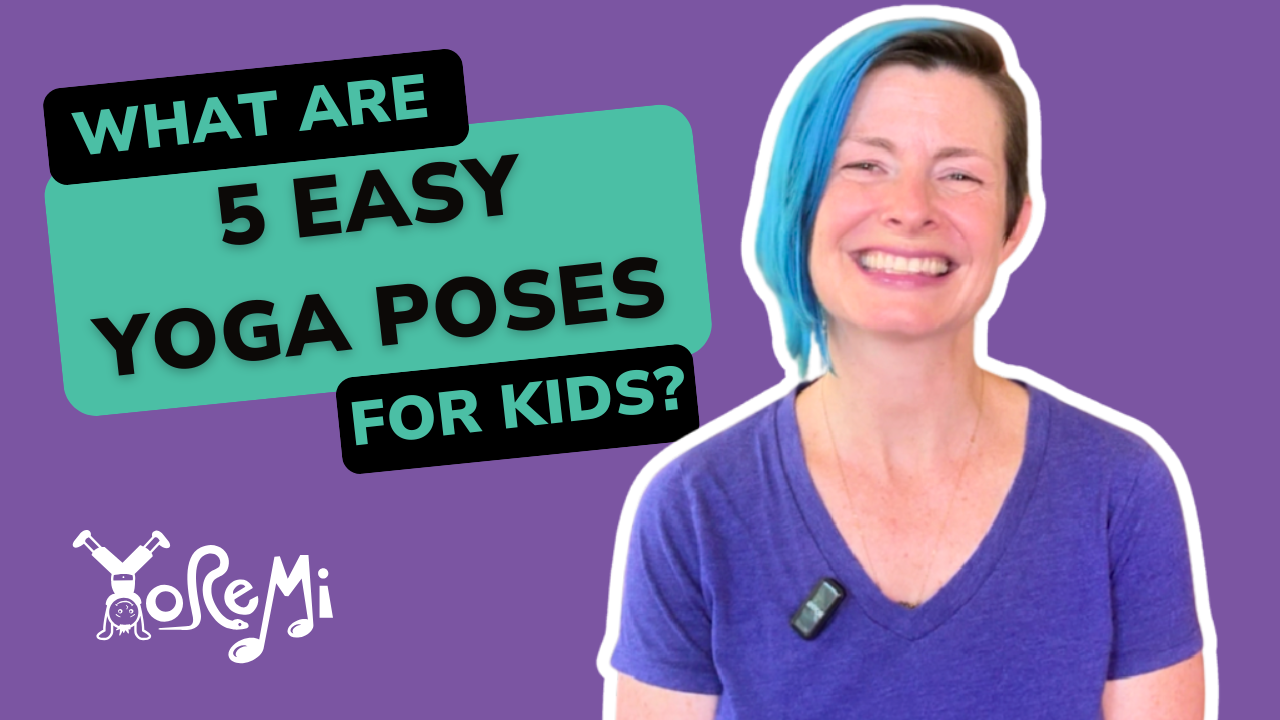5 Hacks for Creating a Mindful Teaching Environment
As overwhelming as change may be, big transitions offer an opportunity for people to recommit to wellness practices. The push to the end of last year, for instance, found teachers and families managing schedule changes, deadlines, holiday gatherings, semester reports and report cards, and more — culminating additional stress to their daily routines.
Add a world pandemic to the equation, and the anxiety and uncertainty that comes with it, and we are all swarmed by an onslaught of highs and lows, trying to manage more than we are used to… the best we can.
First, a Body Scan.
For a moment - go back to that stress and the feelings that come with it. You might find yourself trapped on the constantly spinning hamster-wheel of your thinking brain, with the looming fear of the unknown around the corner.
If this sounds familiar, take a moment to pause and check in with your body…without judging or needing to explain “why” you feel a certain way…just notice.
Is your breathing fast or slow? Shallow or deep?
How are the muscles in your neck and shoulders?
How does your stomach feel?
Are there any other sensations in your body right now?
You might be walking around with a clenched jaw, furrowed brow and hungry growling belly without even realizing it. Because who has time for lunch anyway?
Congratulations, you have just practiced mindfulness using a technique called the “body scan.”
What is Mindfulness?
To put it simply: mindfulness is observing without judgement. It allows us to take a moment to tune into our full experience (sounds, sensations, environment) without judging it, and in turn, switch from our thinking brain to our feeling brain.
Our feeling brain helps us become more fully present.
By practicing mindful techniques (in and out of the classroom) we release our feeling brain and actually become more efficient. When we demonstrate these practices through our actions, we are able to effectively teach our children and students how to do the same.
Here are 5 really effective mindfulness techniques you can start using immediately to bring mindfulness to your classroom and children (including distance learning!)
1. Mindful Breathing Practice
So, you did it…you have scanned your body and noticed the many wonderful spots where tension and stress have been residing. What do you do now?
Practice mindful breathing.
Follow these tips for a mindful breathing exercise that will ease tension in your body:
Take a deep breath in, and exhale slowly
Notice any sensations in your body that arise: your lungs, ribcage, and belly expanding on the inhale… your stomach and torso contracting as you exhale
Repeat
Now see if you can extend the inhale and exhale; can you exhale even longer?
Continue noticing the sensations that arise, while letting go of distracting thoughts
Repeat for 5-10 cycles
Mindful breathing fosters breath awareness, and is one of our favorite calming activities for kids. It allows us to more deeply connect the mind and body, and in turn releases tensions cramped in the crevices of our being. Try this breathing practice daily with your children to help teach self-regulation techniques and promote calm.
Try this: Breathing ball exercise
The Hoberman Sphere is one of our most recommended tools to use with children to support a mindful breathing practice. It allows them to visualize their breath and, eventually, is an emotional regulation strategy they can refer to whenever the feel overwhelmed.
2. Make it Routine
When learning any new skill or establishing a new habit, the benefits and effects are exponentially increased with regular practice. Mindful breathing will only become second nature when it is integrated into the daily routine. That goes for everything in the classroom environment.
Establishing a regular schedule of events allows children to feel safe and empowered. Your students feel secure when they know what to expect. Post the day’s schedule and review at morning meeting. This will both ease anxiety and invite children to become proactive agents in their own learning.
If students know that every day after one activity, they clean up and line up to go to music class, you may find they are not only willing and ready but even start the clean-up/line-up at the appropriate time without being asked.
These are the basic skills of self-regulation. Being more aware of their routine helps children feel safe enough to make choices which feel informed - and productive.
Plenty of pre-school teachers use songs to help children feel informed about what’s happening and why. Take this rewrite of “The Farmer in the Dell”:
We’re going to the park.
We’re going to the park.
Let’s put on our coats and gloves.
We’re going to the park.
Just by having a simple rhyme, easily modified to whatever activity is next will cue a young person to expect a transition, and a little bit about the what and why of the next activity.
Try This: Musical Yoga Activity videos
Yo Re Mi activities such as Deep Breath In or the Sun Dance can help gather a class to make the next moves together.
Some children may protest at first - after all, can’t we just go to lunch? - but the effect of shifting gears as a group is a sensory experience - and as individuals practice self-regulation and mindfulness, the effect on the group is both encouraging and contagious.
Make a routine of doing the same video every day before a scheduled event like lunch, gym, or returning to the classroom after an outside activity.
Encourage one child to stand next to the video, or after having learning the activity well, to lead it without any video playing.
3. Using a Mindfulness Bell
So much of school or home is focused on verbal communication - how to express ourselves in words, how to make sure everyone is understanding the directions, that each child feels heard and understood. Trying to find an encouraging tone of voice over the cacophony of creative young minds is exhausting, and sometimes, well impossible.
Enter the mindfulness bell. There are many different kinds - our classroom preference is a single note, metal percussion instrument such as a Woodstock chime.
Others might be a singing bowl, tinsha bells or glockenspiel - anything which has a clean, pleasant, sustained tone which cuts through and commands attention. The note should ring long enough to take a complete inhale and exhale.
Why a bell? Besides the invigorating tone of a chime, the mindfulness bell replaces a teacher having to shout over a crowd, and presents a sound that is easily recognizable and unlike other classroom sounds. Also, because it’s a physical instrument, a listener can hear - and potentially feel - the pitch, reverberation and soundwave cycles of the ringing bell.
Try This: Mindfulness Bell
Pass the chime around so everyone know how it works, and what it feels like to hold it and play it. Introduce a mindfulness bell by offering simple instructions like taking a breath.
Practice having the class do independent work and when the bell is rung, have each student stop their independent activity, take a breath, and return their attention to the group. Offer children the opportunity to be the chime ringer.
4. Use Fact-Based Observations to Practice Non-judgment
Fact-based observations help others know what you actually see, hear and notice about their effort. Vague “praise language” just says, “I like you” or “you did what I asked.”
Some examples of fact-based observations are, “You used a lot of colors in that painting!” or “You took your time with that math problem and arrived at the correct answer.”
With fact-based observations, the focus is on the specific effort committed by the student. When we say, “Good Job!”, a child might not know what we’re even congratulating them about. They also might not think it reflects their effort, but is more a compliment from the teacher, a “I like you because you did what I asked.”
Try This: Replace judgement-filled language with fact-based observations.
For one week, count the number of times you say “Good job.”
In the second week, try to praise children using a specific action word: “Good Job!” becomes, “Great problem solving!” or “Nice listening to each other.”
In the third week, take the judgment words like “good” and “nice” completely out of the equation.
Replace with reflections on what you observed. “I noticed that you took your time and worked together to resolve that,” or “You raised your hand. What’s your idea?”
5. Practice Gratitude
Advocating for fact-based observations doesn’t mean opinions are bad! In fact, expressing insight and opinions is the best way to model social emotional learning for children. Acknowledging your feelings encourages them to share their own.
As classrooms are small societies, the open expression of emotions is likely to foster class cohesion, increase empathy, and reduce behavioral conflicts.
TRY THIS: Express emotional vocabulary through gratitude.
“What I notice most about your essay, is that you really got into what was driving the character toward his big moment. That shows me you’ve really considered what he’s thinking and feeling here. I’m so grateful for your insight into this story.”
Invite your students to tell (or journal) about something for which they are incredibly grateful.
Why does it mean so much?
What would it feel like not to have it?
Perhaps it’s a person, a place, an experience, anything really. Gratitude for things large and small keeps us connected to our world, respecting and caring for the people, places and things around us.
Start responses with, “One thing I really appreciate about what you said was…Thank you for that…” before moving on to share your own insights. Encourage your children to do the same.
These mindfulness hacks for children and students will help you not only use more mindful teaching strategies but also create a more mindful teaching environment (whether physically in the classroom or online as distance learners!)
Save this article for later and don’t forget to download the Yo Re Mi app for children’s mindfulness and musical yoga videos.














